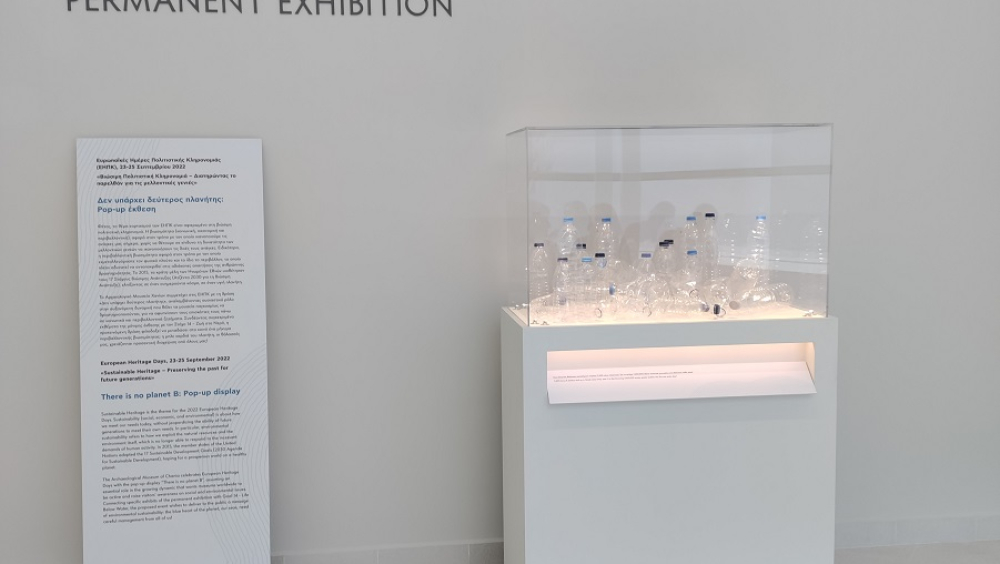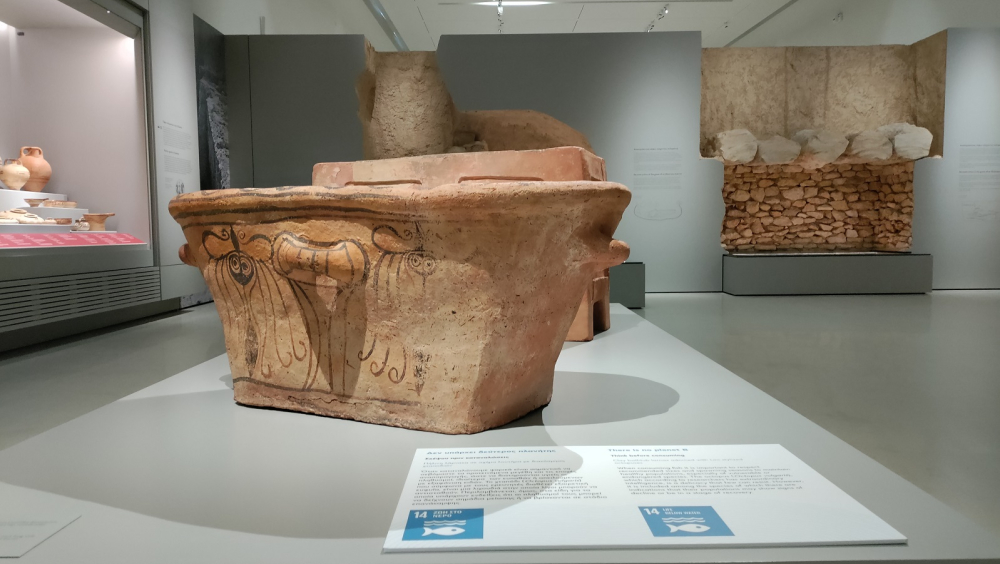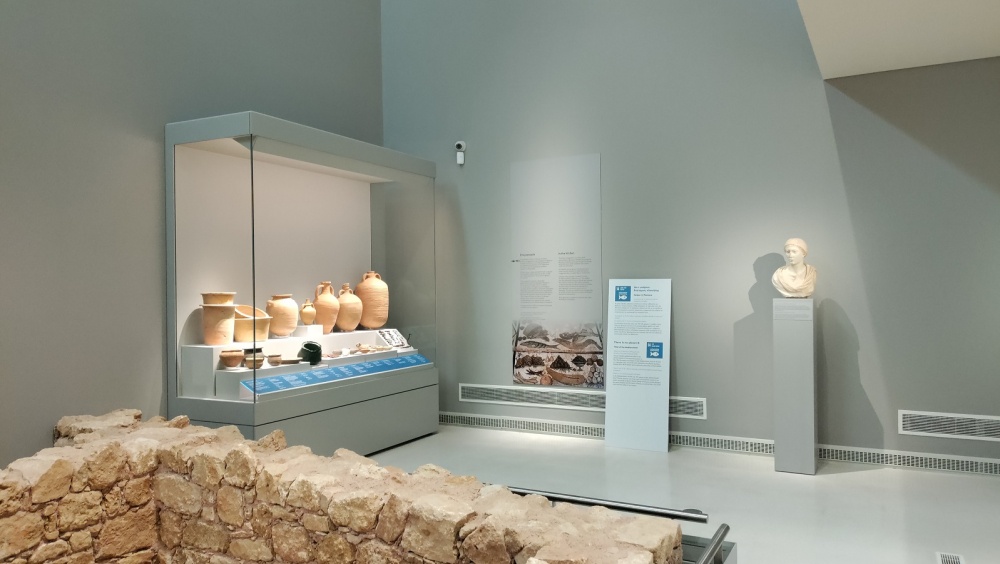There is no planet B
Climate change is a real threat to the ecosystems of Europe and all sectors should work hard to meet the biggest challenge of our times. Can the objects of a museum deliver a sustainable message? They definitely can! The Archaeological Museum of Chania (Crete, Greece) celebrated the 2022 European Heritage Days with the pop-up display "There is no planet B". The initiative focused on selected objects from the permanent collection, which were linked to Sustainable Development Goal 14 - Life Below Water. Short texts on panels placed close to the objects delivered a sustainable message, aiming to raise visitors’ awareness of the acute need for careful management from all of us of the blue heart of the planet.
The Archaeological Museum of Chania (Crete, Greece), features a permanent collection of over 4,000 objects. Engagement with archaeological objects is not only restricted to their cultural and artistic significance; such beautifully crafted objects can deliver multiple messages and invite us to participate in the co-creation of new narratives. With the pop-up display “There is no planet B”, we revisited selected objects of the permanent collection, and revealed the sustainable message that they could deliver. Sustainability is increasingly a primary concern of our society due to awareness of climate change, and with this initiative, we wished our museum to emerge as a key player in communicating environmental issues to wider audiences.
A total of 14 objects were linked to Sustainable Development Goal 14 - Life Below Water, one of the 17 Goals adopted in 2015 by the member states of the United Nations (2030 Agenda for Sustainable Development). The objects, from ceramic vessels and fishing equipment to shark teeth and shells, fulfilled the idea to sound the alarm on the degradation of the marine ecosystem and motivate visitors to think of the Mediterranean, the endangered species, before consuming. For the pop-up display, we have mainly recycled material (panels and window cases) used in a previous temporary exhibition. At the entrance of the permanent exhibition, an introductory panel explained the concept of the pop-up display within the frame of the European Heritage Days. The panel stood next to a window case full of plastic bottles, a strong reminder of the disastrous effects of plastic pollution on our seas. The associated label read, “11,500 tons of plastics end up in Greek seas every year. It is like 1,000,000 empty plastic bottles thrown into the sea every day!” The remaining panels were placed close to the window cases of the permanent exhibition hosting the object(s) selected for delivering the sustainable message. Short texts (in Greek and English) explained to the visitor a fact associated with specific threats that our seas are facing because of human activity. The text next to lead fishing weights and hooks explained how the Mediterranean suffers from overfishing, the appearance of invasive species, and plastic pollution. Similarly, the text associated with a vessel decorated with relief dolphins highlighted the fact that due to the degradation of the marine ecosystem, thousands of dolphins die in the Mediterranean every year, and in consequence, they are in danger of extinction.
Museum objects are powerful agents; they can acquire different readings and tell different stories. Providing new feelings towards contemporary social and ecological issues lies at the core of rethinking and revisiting permanent exhibitions. Through co-discovery and co-creation, museums can improve the communication of climate change, making people aware of the interconnections that exist between choices and consequences and of the changes needed.
Europe is home to close to 800 million people who share a distinctive cultural and natural heritage. The unique terrestrial, aquatic, and marine ecosystems of the continent are currently endangered due to climate change –as are the whole planet. Climate change may mean different things to different people in different locations, based on their values and views of the world and nature, and on their perceptions of what is at stake. Independently of that, we are already or will be all affected and public awareness of the issue is very important.
The role of the European museums is of fundamental significance to create co-narratives about climate change, through the agency of their collections. Exclusive reliance on scientific, economic, or technological information is not enough as a means to persuade people to participate in climate action. By establishing cross-frontier partnerships and networks, museums can act as the best intermediator for communicating and not simply informing the public on climate change.


